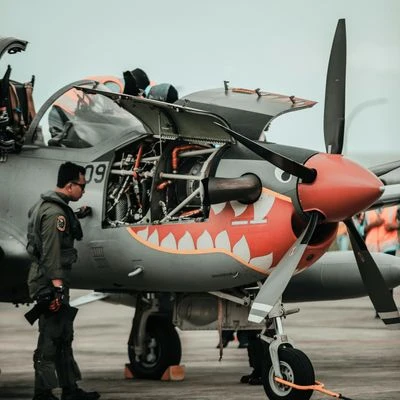Explore Business Standard
Explore Business Standard
The flight tests of the new air defence system came three-and-half months after Operation Sindoor
)
Airforce
India, situated in a region marked by dynamic and complex security challenges, has acknowledged the critical role drones will play in both external defence and internal security. As conflicts in Ukraine, Israel, and Yemen have shown, drones offer speed, precision, and tactical flexibility — all without putting human lives at immediate risk. Widescale deployment of drones in the recently concluded Operation Sindoor carried out by the Indian Armed Forces to eradicate terrorist hideouts and training camps, in the aftermath of gruesome terrorist attacks in Pahalgam, is another example of how drones are changing warfare globally. Drones are deployed to gather real-time and valuable intelligence to plan operations, utilised for destroying targets with precision, and used to assess the post-strike damage and replan the subsequent waves of action, all without putting the brave personnel’s lives at risk. These advantages are pushing militaries worldwide, including India, to reimagine their force structures.
Drones in Indian military operations
Over the past decade, India has steadily increased the use of drones across military operations. Initially limited to surveillance
and reconnaissance missions, the scope of UAV deployment has expanded significantly. Today, drones are being integrated into counter-insurgency and counter-terrorism efforts, border patrols, and even tactical strike operations. The extensive use of drones after the terror attack in Pahalgam in April 2025 underscores their value to the forces. As reports emerged of militants targeting a convoy, drones were immediately deployed to assess the situation and track the attackers’ movements in the challenging forested terrain. The rapid aerial reconnaissance enabled security forces to coordinate a timely response, minimise casualties, and pursue the perpetrators effectively. This swift deployment highlighted how drones have become a critical component of India’s evolving counter-terrorism toolkit — demonstrating their effectiveness even in high-altitude and logistically difficult environments.
Building a self-reliant ecosystem
Recognizing the strategic risks of depending on foreign technologies—particularly from land-border-sharing countries—India’s Ministry of Defence has been proactive in fostering indigenous drone development. Recent advisories from the ministry have urged Indian manufacturers to avoid sourcing components from potentially adversarial countries, further reinforcing the importance of building a secure and sovereign supply chain.
This push has catalyzed rapid growth in India’s domestic drone manufacturing sector. In 2024, the government launched new incentives and policy frameworks to support the development of indigenous drones tailored specifically to Indian military needs. Several private-sector companies have emerged as key players, designing UAVs equipped with advanced surveillance systems, communication technology, and precision strike capabilities. These include small tactical drones suited for urban and jungle warfare, as well as larger UAVs capable of intelligence, surveillance, and reconnaissance (ISR) missions in
high-altitude and border zones.
Such innovations signal a decisive shift in India’s defence strategy — from importing critical technologies to creating a self-sustained ecosystem that can meet the demands of modern warfare.
However, we have a long way to go before realising this vision. And, both the government and the industry need to work together to accelerate this journey. The government needs to solve the funding challenge for R&D through dedicated and sector-specific R&D funds, provide financial incentives to scale up manufacturing, and also play the role of principal demand generator for niche and nascent technologies like drones to ensure that R&D and manufacturing ecosystem development efforts are converted into real and sustainable businesses in the country. The industry, on the other hand, needs to focus on developing technology and products and creating a sustainable ecosystem instead of relying on imports and carrying out assembly to pass on their products as “Made in India”.
In this article : DRDORajnath Singhair defence
Next Story


